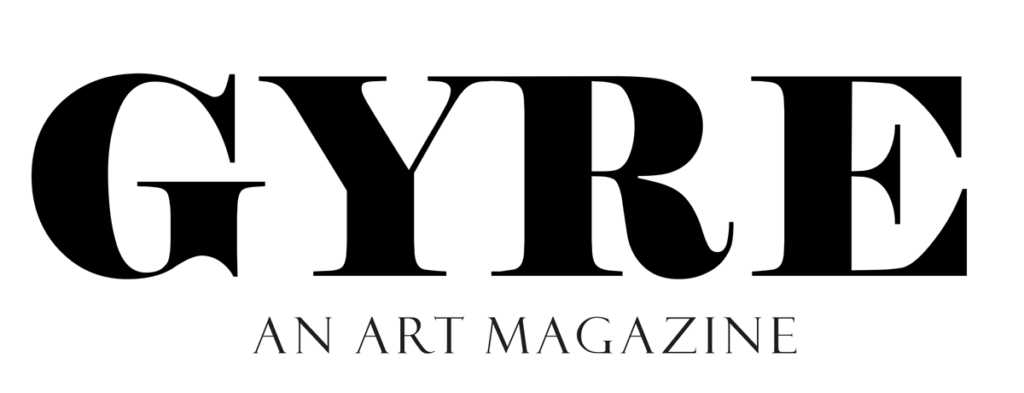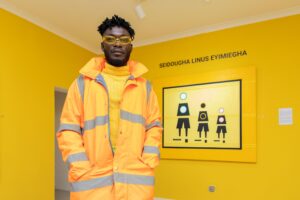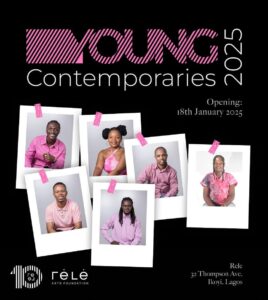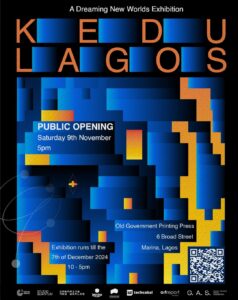By Joseph Omoh Ndukwu
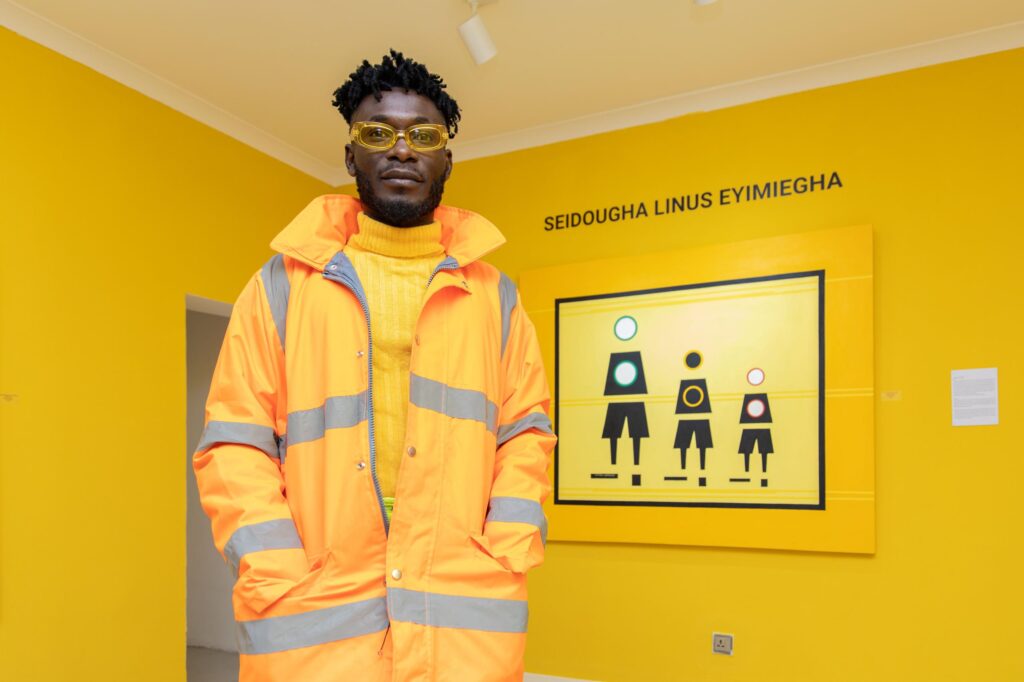
Seidougha Linus Eyimiegha, Mr Danfo, was born in Lagos, Nigeria in 1991. He grew up in Amukoko and Okokomaiko, and the surrounding areas of Ajegunle and Ajangbadi, Lagos. Growing up in these places informed his aesthetic and his subject—Lagos itself. His mother was a trader, and his father held several jobs at different companies, including Unilever Nigeria Plc., and before his death, was employed as a worker on cargo vessels at CMS, Lagos. As a boy, he assisted his mom in her trade, becoming familiar with the city, its people, and its character. Everything he saw, the colours, the danfo buses, the art, the sounds, the road signs, the bustle of the streets, left deep impressions on him. His art so far has been a response to and a celebration of everything Lagos has given him.
Mr Danfo went to primary school in Lagos and had his secondary and university education in Bayelsa and Delta State, where he studied Fine Art at Delta State University, specializing in painting. Despite travelling out of Lagos for his post-primary school education, the city remained on his mind, and he returned to it after university to work as an artist, to better observe and interact with it. In his exploration of Lagos, he has blended and moved across different genres: graphic art, pop art, street art, signage, abstract art, minimalism, sculpture, and installation. He knows that to think about and respond aesthetically to a place like Lagos, with its overwhelming variety and complexity, would require a multi-faceted approach.
He had his first solo exhibition, Portraits of Public Figures in Lagos, at Alliance Française (Mike Adenuga Centre), Lagos. The exhibition, which showed about 20 works, was built around Mr Danfo’s minimalist paintings. The paintings took as their subject the different characters of Lagos—market women, danfo drivers, okada riders, and others (the public figures of Lagos)—and took as their theme the struggles and resilience of these characters, these people. The city itself and its famed yellow buses—the danfo—were also characters in the exhibition. With titles such as Market Woman, Fine-boy Conductor, Yellow Sisi, JJC, Mr Danfo leaves no doubt what he wanted the works in his first solo exhibition to do—to be a chronicle and a celebration of lower-class Lagosians who get around in the Lagos danfo.
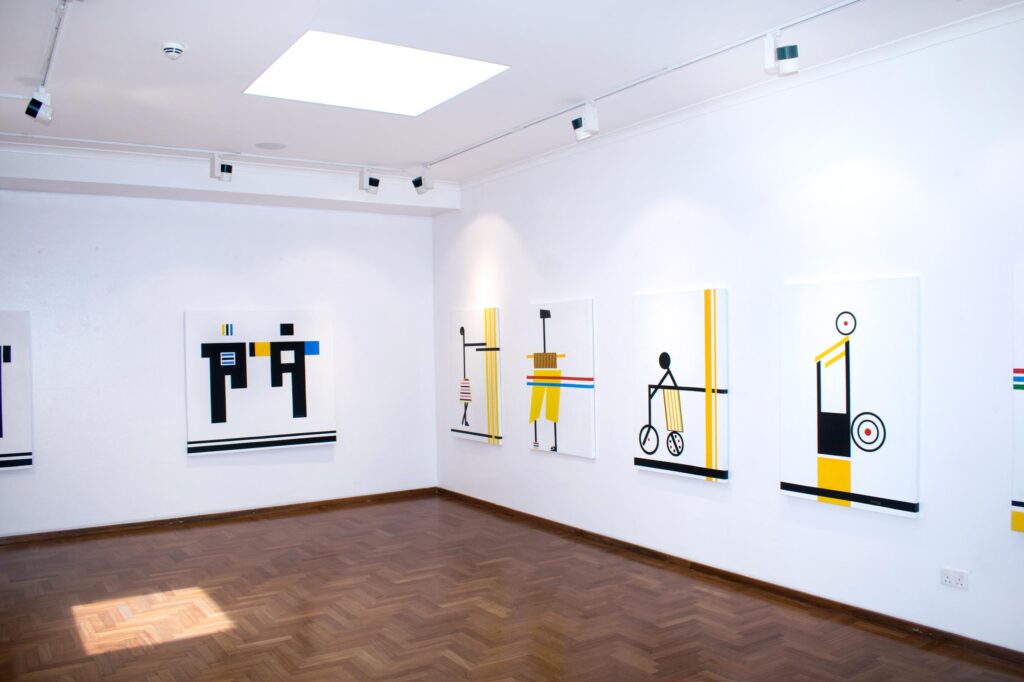
In the exhibition, Mr Danfo’s inventiveness with colour and the precision of his technique were impressively apparent. The influences of 20th century masters of minimalist and modern art, like Piet Mondrian, Donald Judd, Sol LeWitt, and Barnett Newman were apparent. Each canvas employed a generous use of white space and minimal segments of colour, usually yellow, red, and black, to delineate character and symmetry. The result was uniquely Mr Danfo’s, the intelligence of composition and freshness of vision immediately standing out to anyone who stood before them.
Mr Danfo believes in pushing the boundaries of art. The limits and similarity of traditional or conventional artistic styles of expression are of little interest to him. He wants to open the doors of Nigerian contemporary art to bolder and more unique ways of approaching paintings. So towards this end, street language, signs, markings, geometric shapes, and large fields of block colour have become significant qualities of his work. In coming up with his visual language, Mr Danfo is relentlessly curious and diligent. He works hard to ensure that he creates a unique visual language—at least unique in the Nigerian art space—while at the same time remaining relatable to the average Lagosian and relevant to their everyday experience of its streets.
More than a year after Portraits of Public Figures in Lagos, he worked with Rele Gallery, Lagos as a cohort of Young Contemporaries 2023, the 2023 edition of the gallery’s ongoing programme to support and showcase the work of young African artists. For the project, he presented works from his Safety and Street Signs series. The works, like those in Portraits of Public Figures, were inspired by the Lagos metropolis. Prototype, his most recent exhibition, was held in Switzerland. It showed in Geneva in mid-2024 and was based on his Safety and Street Signs series. The exhibition comprised a host of new work. It was a culmination of work he had been developing for more than two years. The exhibition took its inspiration and impetus from a road crash he suffered in 2020. After the autocrash, concerns about road safety became deeply important to him. The exhibition has been his largest and most ambitious yet. It was divided across three rooms: a red room, a yellow room, and a blue room. The exhibition displayed sculpture for the first time in his history of public exhibitions. The sculptural pieces resembled figurines of African tribal gods, especially gods from Yoruba culture, likely in homage to Lagos and the Yoruba traditions and roots of the city.
The figurines, called Gods of Safety, having traffic signs and instructions affixed to them, illuminated the connections between the aesthetics, culture, and traffic markings of the two cities: Lagos and Geneva. The words themselves—Wahala Be Like Bicycle, See Me See Geneva Oh, Wahala Dey Ahead, Stop Your Gragra—are popular expressions in Lagos streets and bus stops. They are like a linguistic foot planted firmly in the artist’s home city even as he travels away from home.
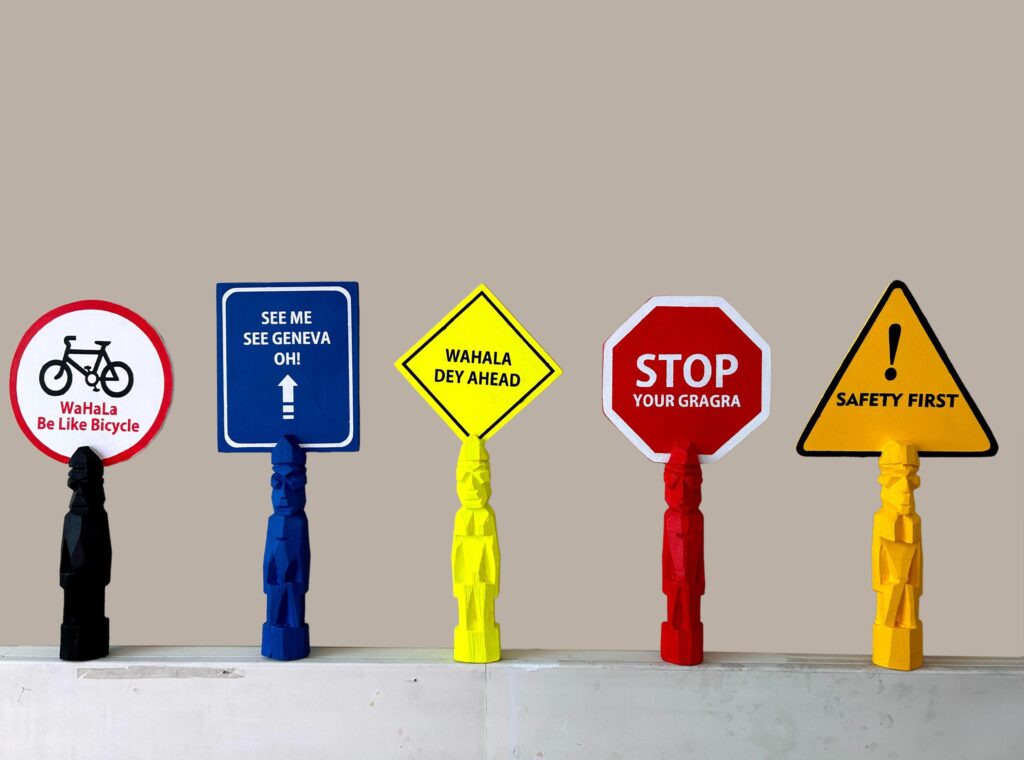
His Safety and Street Signs series caught the attention of the Pro Helvetia Foundation and earned him a residency with them. Prototype was developed as part of this research residency. Switzerland was a wonderful choice for the residency and exhibition, as the concerns of the Safety and Street Signs project resonated with the attitude of the Swiss towards road safety and traffic signs. This attitude is enshrined in the Geneva Convention on Road Traffic and informs the activities of the UNECE (United Nations Economic Commission for Europe) concerning traffic safety. The convention, signed by 19 countries in 1949 in Geneva, and others like it make legible the great importance of road safety and the necessity of communicating traffic regulations through unanimously agreed-upon signs and markings.
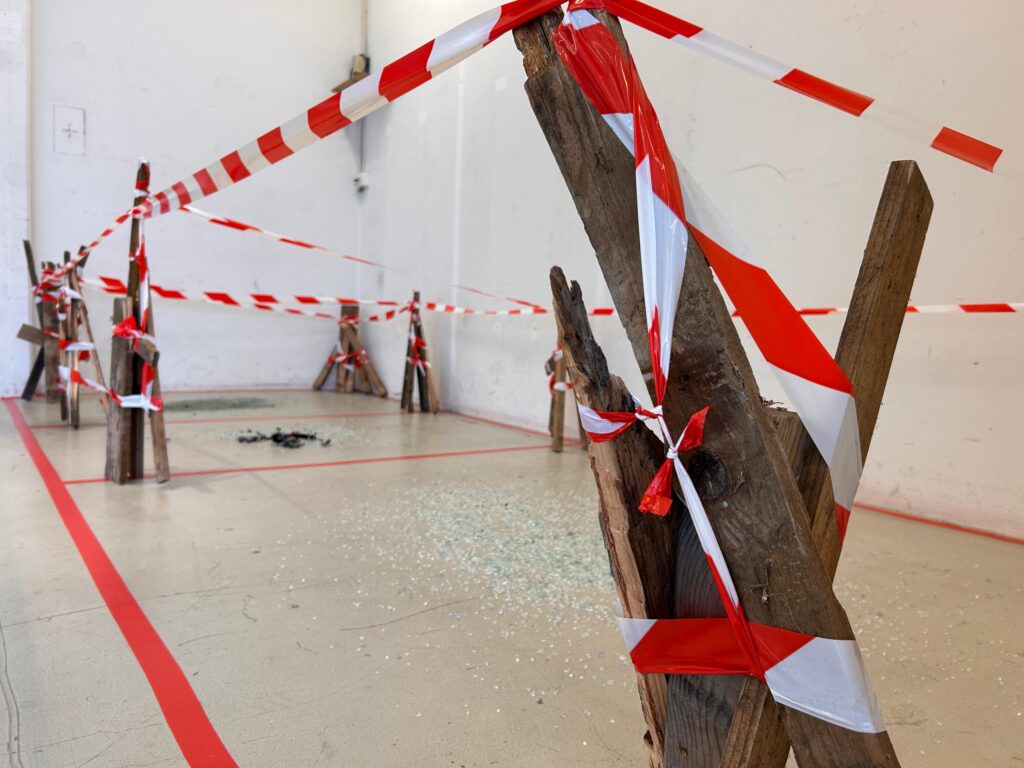
How are people related to their public spaces and the reality of those spaces? Who are people in those spaces? These are the questions that underpin Mr Danfo’s work. The intersection between the private and the public creates the tension that exists in his works. Much of this tension and energy is understated and can only perhaps be glimpsed readily in the titles he gives his works. It is important to say “readily” and to understand the word to mean “immediately” or “for the duration that one is looking at the pieces.” For the effect of Mr Danfo’s work arrives like an aftertaste. They are powerful on encounter, but their larger significance and resonances unfold on the consciousness after one has stepped away from the works and perhaps even left the exhibition space for the outside world. His works take on their fullest meanings and power in the city itself.
His work has, over the years, moved from abstraction, as seen in Portraits of Public Figures in Lagos, to works much clearer to read but more complex in conception and execution. Prototype is the culmination of this new direction in his work. And it showed an additional and seemingly new path for his work going into the future. It is a vision that blends art with public concern, this concern being traffic awareness and public safety in the case of Prototype. It is the work of aesthetics in service of society. This new path can be seen also in his work with children.
Every year, Mr Danfo organizes art classes for children, where he teaches them how to paint and make art works while at the same time educating them on the importance of safety in public spaces. These classes, according to him, bring him great joy, as he gets to foster a love for art and responsibility in the children at the same time that he witnesses their creativity.
Mr Danfo has had exhibitions at Rele Gallery and Art Twenty-One, Lagos. His work has also shown in Johannesburg at the Johannesburg Fair, with Bubblegum Gallery. He has had residencies in Nigeria and Switzerland. In 2019, he participated in the Ofala Festival exhibition in Onitsha, southeast Nigeria. In 2021, at the National Museum, Lagos, he exhibited his installation of local street-sold gin, titled Sapele Spirit (after the Nigerian name for such locally distilled drinks, sapele water). All of these show the depth of his commitment to his art and what he hopes would be the legacy of his work—a desire to have his works be part of the permanent collections of institutions of art around the world.
In a 2023 Zoom interview, when asked about what he sees as the future of his work and practice, he said, “I don’t have a fixed future in mind. I want to keep creating and being surprised by the work and where it takes me.” No sentiment could better speak to the unending curiosity, inventiveness, and openness from which come the most enduring works of art.
